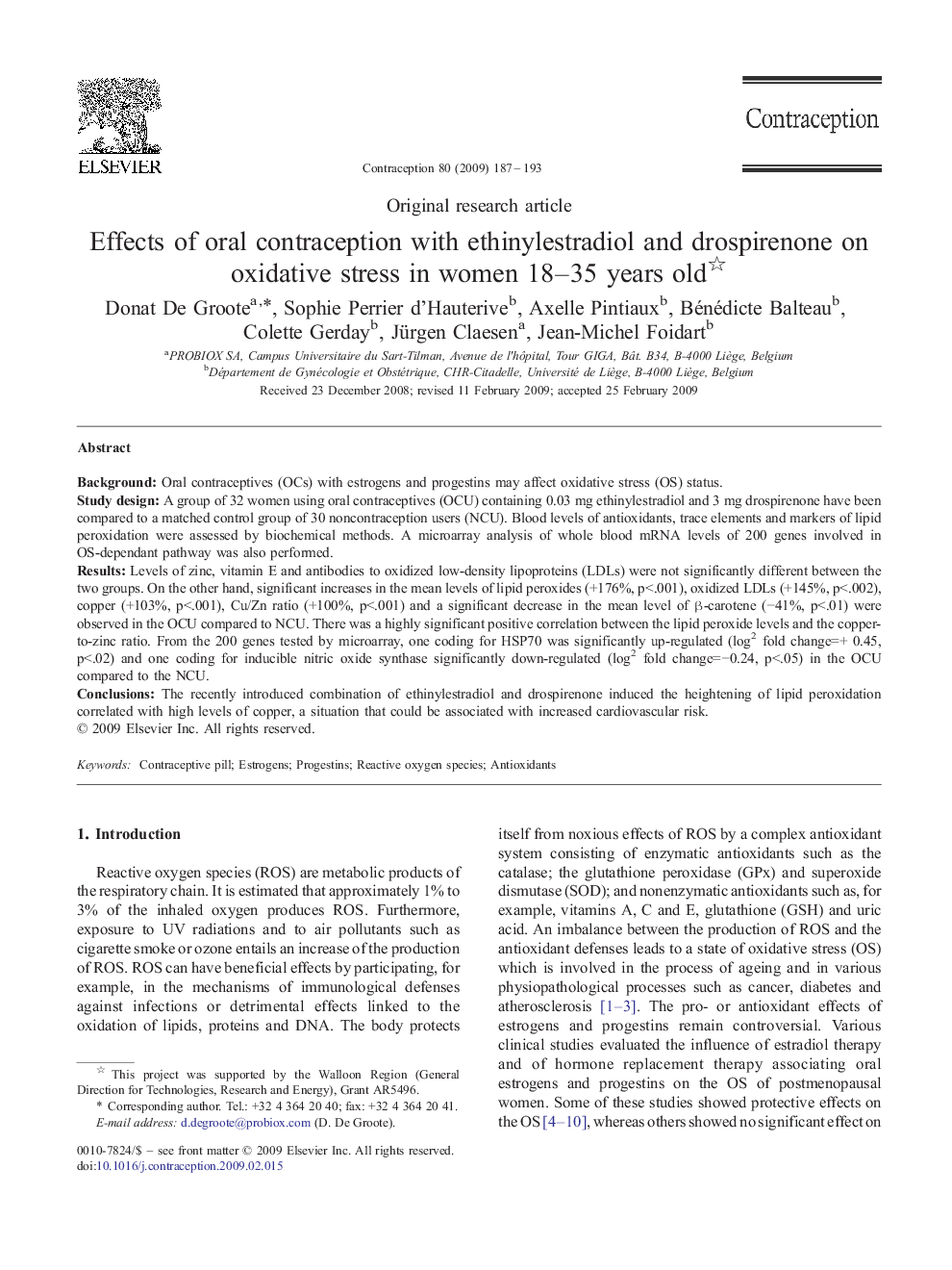| کد مقاله | کد نشریه | سال انتشار | مقاله انگلیسی | نسخه تمام متن |
|---|---|---|---|---|
| 3915184 | 1251498 | 2009 | 7 صفحه PDF | دانلود رایگان |

BackgroundOral contraceptives (OCs) with estrogens and progestins may affect oxidative stress (OS) status.Study designA group of 32 women using oral contraceptives (OCU) containing 0.03 mg ethinylestradiol and 3 mg drospirenone have been compared to a matched control group of 30 noncontraception users (NCU). Blood levels of antioxidants, trace elements and markers of lipid peroxidation were assessed by biochemical methods. A microarray analysis of whole blood mRNA levels of 200 genes involved in OS-dependant pathway was also performed.ResultsLevels of zinc, vitamin E and antibodies to oxidized low-density lipoproteins (LDLs) were not significantly different between the two groups. On the other hand, significant increases in the mean levels of lipid peroxides (+176%, p<.001), oxidized LDLs (+145%, p<.002), copper (+103%, p<.001), Cu/Zn ratio (+100%, p<.001) and a significant decrease in the mean level of β-carotene (−41%, p<.01) were observed in the OCU compared to NCU. There was a highly significant positive correlation between the lipid peroxide levels and the copper-to-zinc ratio. From the 200 genes tested by microarray, one coding for HSP70 was significantly up-regulated (log2 fold change=+ 0.45, p<.02) and one coding for inducible nitric oxide synthase significantly down-regulated (log2 fold change=−0.24, p<.05) in the OCU compared to the NCU.ConclusionsThe recently introduced combination of ethinylestradiol and drospirenone induced the heightening of lipid peroxidation correlated with high levels of copper, a situation that could be associated with increased cardiovascular risk.
Journal: Contraception - Volume 80, Issue 2, August 2009, Pages 187–193